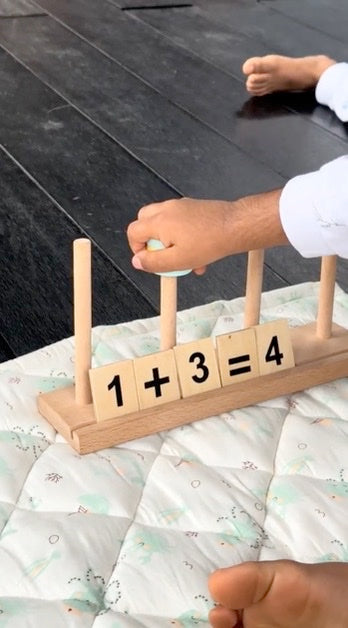Have you noticed toddlers play Peekaboo. This activity describes a child's ability to know that objects continue to exist even though they can no longer be seen or heard. If you have ever played a game of "peekaboo" with a very young child, then you probably understand how this works.
When an object is hidden from sight, infants under a certain age often become upset that the item has vanished. This is because they are too young to understand that the object continues to exist even though it cannot be seen. If your 8-9 month old baby sees you hide an object, he'll understand that it's not gone for good and will try to search for it. By 12 months: By the time he celebrates his first birthday, your little one will be able to easily find objects he sees you hide.
Children's minds are not merely smaller versions of adult minds. Until years ago children were largely treated simply as smaller versions of adults until Swiss psychologist Jean Piaget in his theory of Cognitive Development was one of the first to identify that the way that children think is different from the way adults think. Children move through different stages of mental development when their intelligence grows and develops. Older children do not just think more quickly than younger children. There are both qualitative and quantitative differences between the thinking of young children versus older children. Based on his observations, he concluded that children were not less intelligent than adults, they simply think differently.
Children take an active role in the learning process, acting much like little scientists as they perform experiments, make observations, and learn about the world. As kids interact with the world around them, they continually add new knowledge, build upon existing knowledge, and adapt previously held ideas to accommodate new information.
The Stages
Through Piaget’s observations of his own children, he developed a stage theory of intellectual development that included four distinct stages:
The Sensorimotor Stage
Ages: Birth to 2 Years
Major Characteristics and Developmental Changes:
- The infant knows the world through their movements and sensations
- Children learn about the world through basic actions such as sucking, grasping, looking, and listening
- Infants learn that things continue to exist even though they cannot be seen.
- They are separate beings from the people and objects around them
- They realize that their actions can cause things to happen in the world around them
During this earliest stage of cognitive development, infants and toddlers acquire knowledge through sensory experiences and manipulating objects. A child's entire experience at the earliest period of this stage occurs through basic reflexes, senses, and motor responses.
It is during the sensorimotor stage that children go through a period of dramatic growth and learning. As kids interact with their environment, they are continually making new discoveries about how the world works.
The Preoperational Stage
Ages: 2 to 7 Years
Major Characteristics and Developmental Changes:
- Children begin to think symbolically and learn to use words and pictures to represent objects.
- Children at this stage tend to be egocentric and struggle to see things from the perspective of others.
- While they are getting better with language and thinking, they still tend to think about things in very concrete terms.
At this stage, kids learn through pretend play but still struggle with logic and taking the point of view of other people. They also often struggle with understanding the idea of constancy. For example, a researcher might take a lump of clay, divide it into two equal pieces, and then give a child the choice between two pieces of clay to play with. One piece of clay is rolled into a compact ball while the other is smashed into a flat pancake shape. Since the flat shape looks larger, the preoperational child will likely choose that piece even though the two pieces are exactly the same size.
The Concrete Operational Stage
Ages: 7 to 11 Years
Major Characteristics and Developmental Changes
- During this stage, children begin to thinking logically about concrete events
- They begin to understand the concept of conservation; that the amount of liquid in a short, wide cup is equal to that in a tall, skinny glass, for example
- Their thinking becomes more logical and organized, but still very concrete
- Children begin using inductive logic, or reasoning from specific information to a general principle
While thinking becomes much more logical during the concrete operational state, it can also be very rigid. Kids at this point in development tend to struggle with abstract and hypothetical concepts.
During this stage, children also become less egocentric and begin to think about how other people might think and feel. Kids in the concrete operational stage also begin to understand that their thoughts are unique to them and that not everyone else necessarily shares their thoughts, feelings, and opinions.
The Formal Operational Stage
Ages: 12 and Up
Major Characteristics and Developmental Changes:
- At this stage, the adolescent or young adult begins to think abstractly and reason about hypothetical problems
- Abstract thought emerges
- Teens begin to think more about moral, philosophical, ethical, social, and political issues that require theoretical and abstract reasoning
- Begin to use deductive logic, or reasoning from a general principle to specific information



